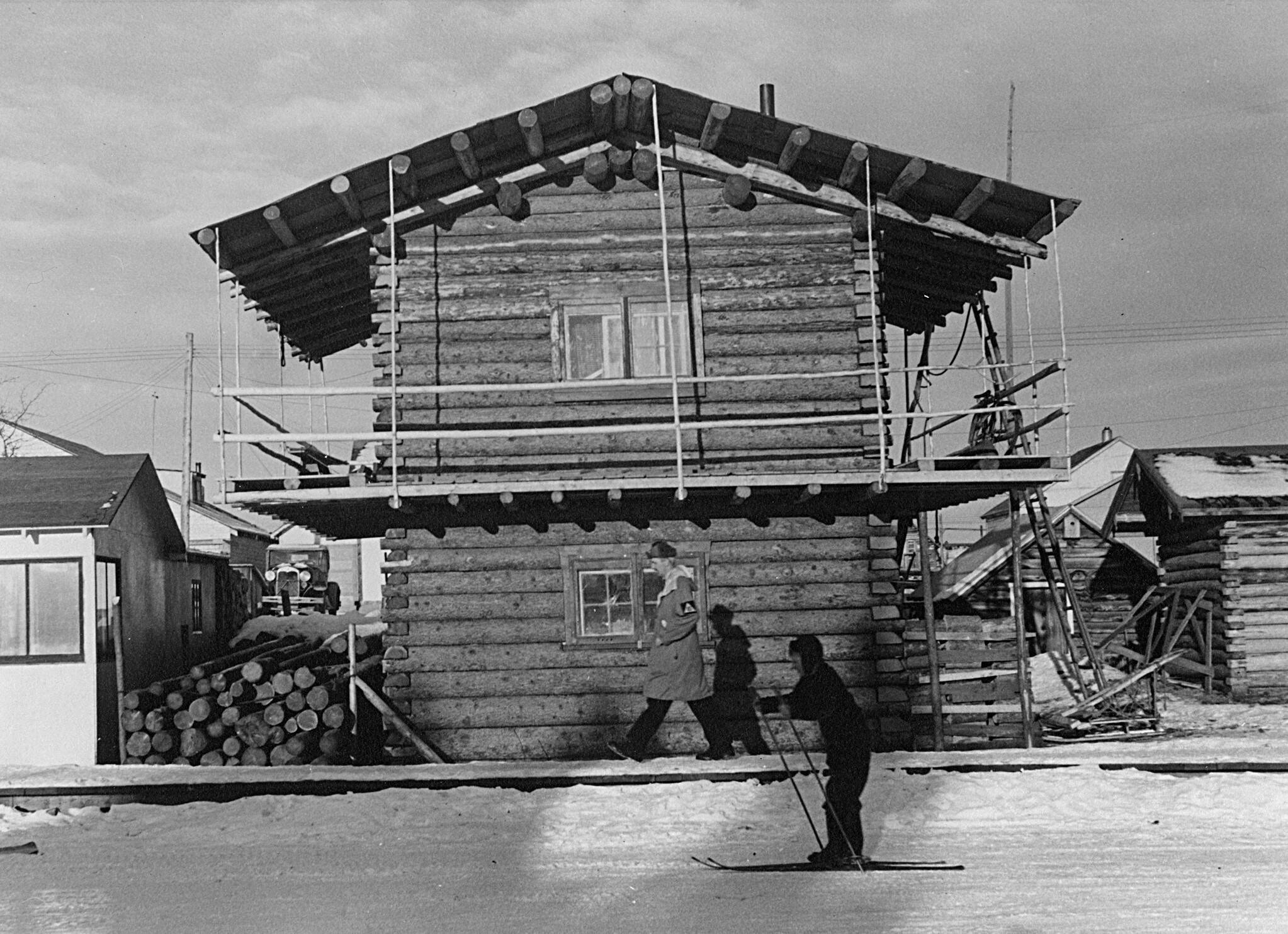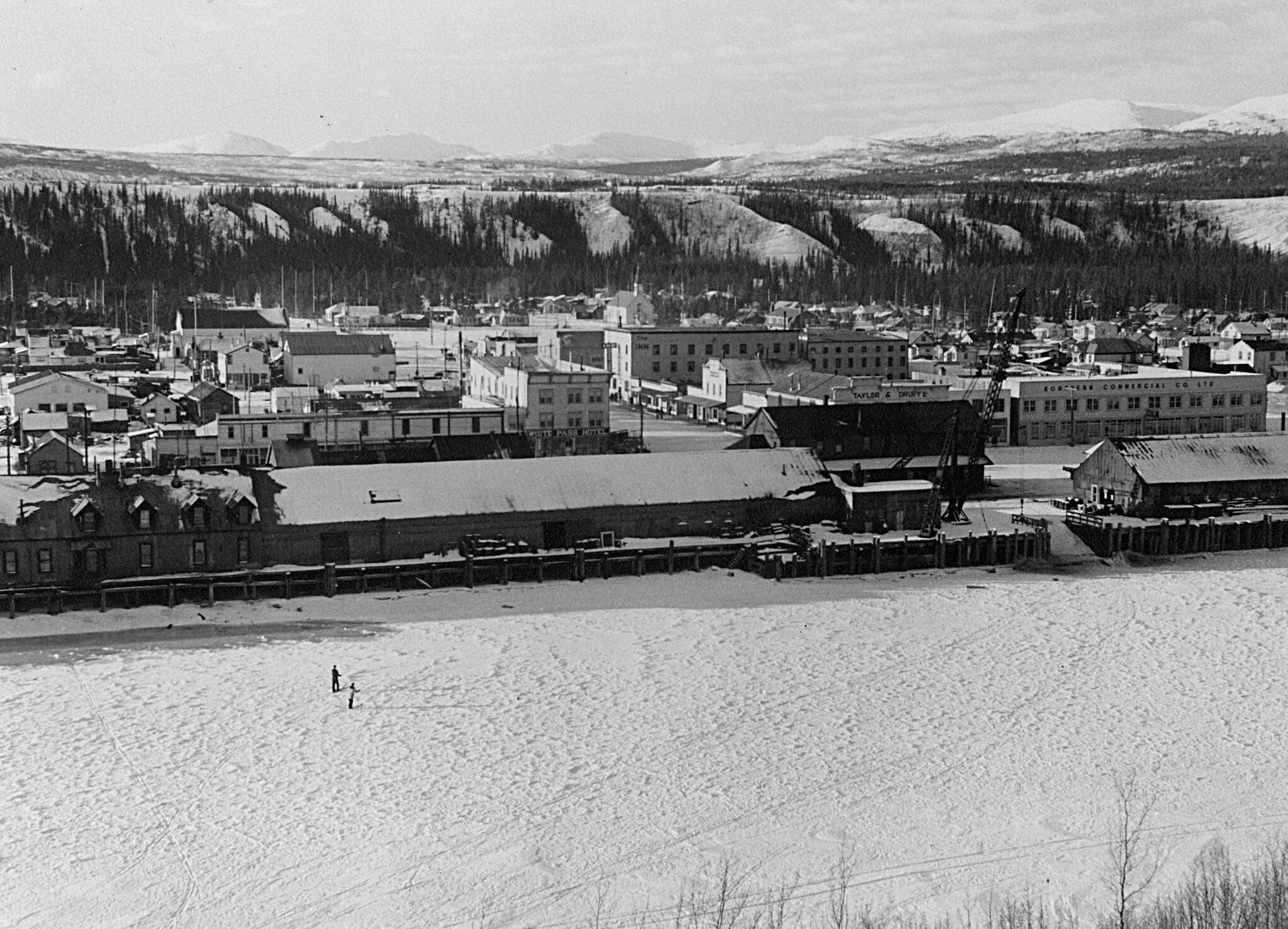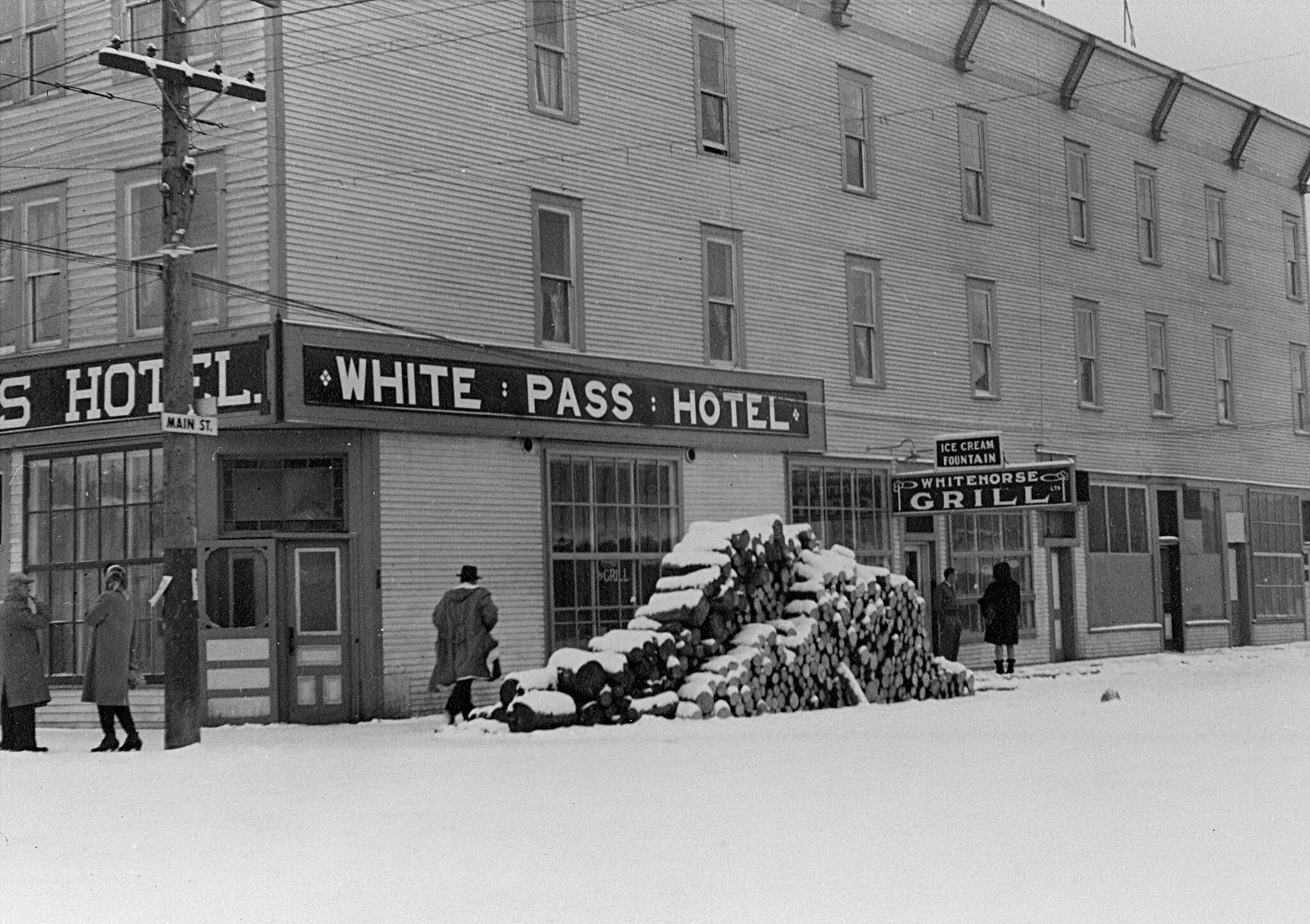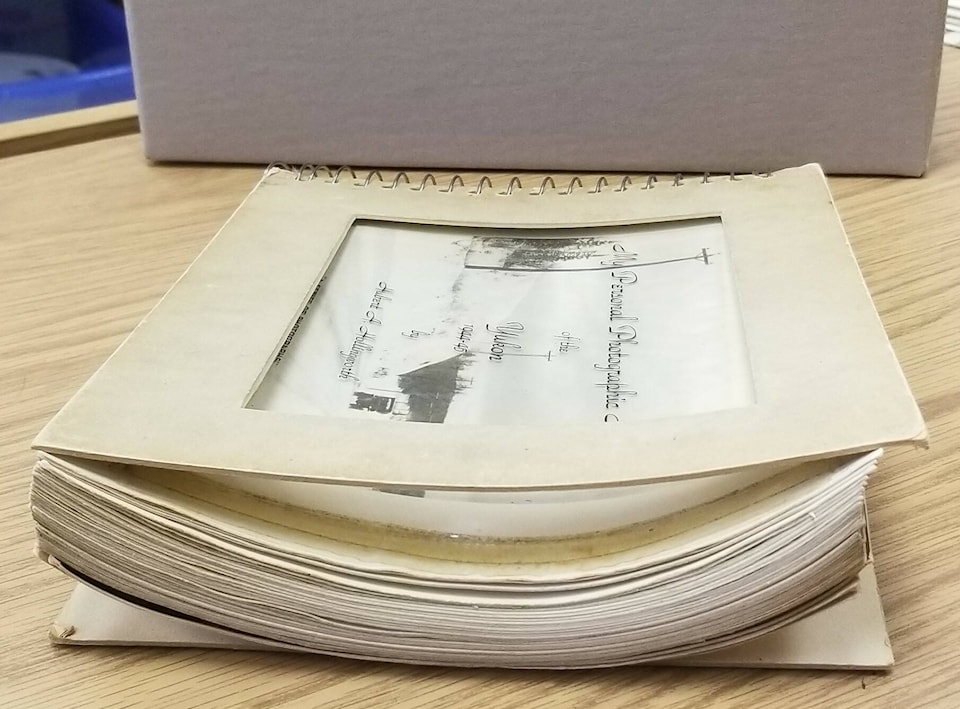Seven years ago, I unwrapped a Christmas gift from my wife, Kathy, that had been marked “open me last.” Inside was the most remarkable surprise that a history hunter could imagine.
It was a handmade album of 31 photographs, mounted on heavy card stock. The cover had a matte window cut into it, beneath which was a transparent page that said: “My Personal Photographic Album of the Yukon 1944-45, by Hubert A. Hollingworth.” The whole thing was held together with a spiral wire binding.
The album had been subjected to light wear and tear. There was some staining and abrasions on the cover, and the corners were slightly dog-eared. But the photographs in the album were in good condition, and what marvellous images they were.
The photographs were taken in Whitehorse and other locations along the Alaska Highway and the Haines Road. There are views of downtown Whitehorse from various angles – across the river, looking up Main Street, and looking down from the clay cliffs. Certain downtown buildings were singled out for attention, including a two-storey log skyscraper (the four-storey log structure is not visible behind it), the ’98 Ballroom and the White Pass Hotel. Presumably these places held some special meaning for Mr. Hollingworth.
Photos taken along the Alaska Highway included views of Kluane Lake and Dezadeash Lakes. There are others of the shipyard and sternwheel riverboats, Miles Canyon (from various angles and during different seasons) and the Whitehorse Rapid. The Standard Oil Refinery, which was part of the CANOL project, as well as clusters of military buildings are shown in other pictures in the album.

A more personal touch is applied to a collage of pictures from the Yukon Winter Carnival in March of 1945, while a portrait captures the commanding officer of the North West Service Command (the US Military agency established to manage the construction of the Alaska Highway, The CANOL project and the White Pass and Yukon Route during the war.)
What struck me was the quality of the photos: sharp, well-composed and well-exposed images. I was fascinated by them immediately, and have used some of them to illustrate my columns over the past few years. One of the first things that I did when I received this remarkable gift was to make high-resolution scans of all the images reduce the handling of the album. And physical condition was one of two issues that haunted me for many years.
The first issue was that the pages upon which the photos were mounted were slowly distorting. Rob Ridgen, conservator at the Archives, explained what is going on. The photographs consist of gelatin layers coated on a photographic paper support that is fully adhered to a heavy paper mount. Paper and gelatin are moisture-sensitive materials that have different dimensional responses as they absorb moisture and expand in humid conditions and contract in low humidity.
In the case of the Hollingworth album, the photographs began to curl as the gelatin layers contracted more than their paper supports did. Unfortunately, I could not provide the level of humidity in my home that meets archival standards that would prevent this from happening.
Earlier this year, I was showing my collection to Dennis Ray, a collector of rare and fine books, who lives in British Columbia. He noticed the extreme curvature of the photos in this album, and it brought the issue into focus for me. I had to do something.
I contacted The Yukon Archives, who, I felt, have the expertise to care for it. Would they be interested in adding this album to their collection? After reviewing the item, they concurred and immediately placed the sensitive collection of photographs into storage under controlled relative humidity. They have already noticed positive results. In the intervening months, the pages of the album have already relaxed 1.5 centimetres, and they expect them to relax further, though probably not back to the original flattened condition.

The staff are trained to handle sensitive objects with care and ensure that patrons do the same. Given that, and the secure environmental conditions at the Archives, Ridgen feels that this album could still be around in a thousand years.
The other issue was learning more about the photographer. I searched the Whitehorse Star from the time period 1944-1945, but found no mention of anyone named Hollingworth, and there the situation remained for many years.
Meanwhile, Lesley Buchan, the private records archivist, assigned the task of researching this collection of photos to an archival assistant, and here is what she found.
While Hollingworth seems to have left no historical footprint in the Yukon (except for this exceptional album), he was a prominent photographer in Edmonton, Alberta. Hollingworth ran his own studio, and worked in the studios of other prominent photographers, and for Edmonton newspapers, eventually becoming foreman at the Queen’s Printer until he retired in the 1970s.
In the Second World War, he worked as a photographer for the U.S. Army during the construction of the Alaska Highway. He was transferred to Whitehorse for the period 1944-45, and it was then that he took these remarkable photographs. The bulk of the Hollingworth collection is held at the Edmonton City Archives, and I sent them an inquiry, but sadly, there are no pictures of Whitehorse or the Yukon in that collection.
In addition to the album, I also provided the Yukon Archives with scans of the 31 photographs, which I hope researchers and the curious will find useful enough that the original album will not have to be handled as often.

So, there you have it. I had this marvellous collection of historically valuable wartime photographs taken in Whitehorse and the surrounding area, but it was clear that I could not properly care for them.
One nagging question is why and how this album became separated from the Hollingworth collection that was donated to the City of Edmonton Archives. The vendor, who no longer appears to be in business, was located in Hope, B.C. Their description of the album did not mention any curvature of the photographs, nor did they state where the album came from. How an album of photos, taken in the Yukon by a prominent Edmonton photographer, ended up in Hope, B.C., remains a mystery.
Personally, I am glad that this album of remarkable photos is in the hands of professionals at the Yukon Archives who will ensure that these images will be preserved for a long time, and that the public can enjoy them too!
Michael Gates is Yukon’s first Story Laureate. His next book, “Hollywood in the Klondike,” is due for release in September. You can contact him at msgates@northwestel.net
